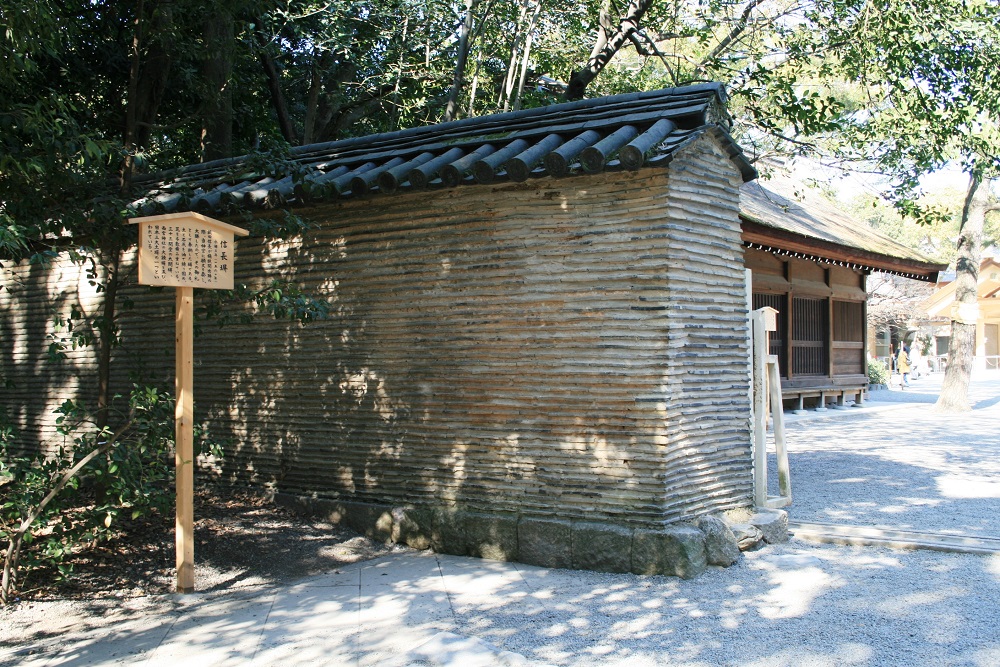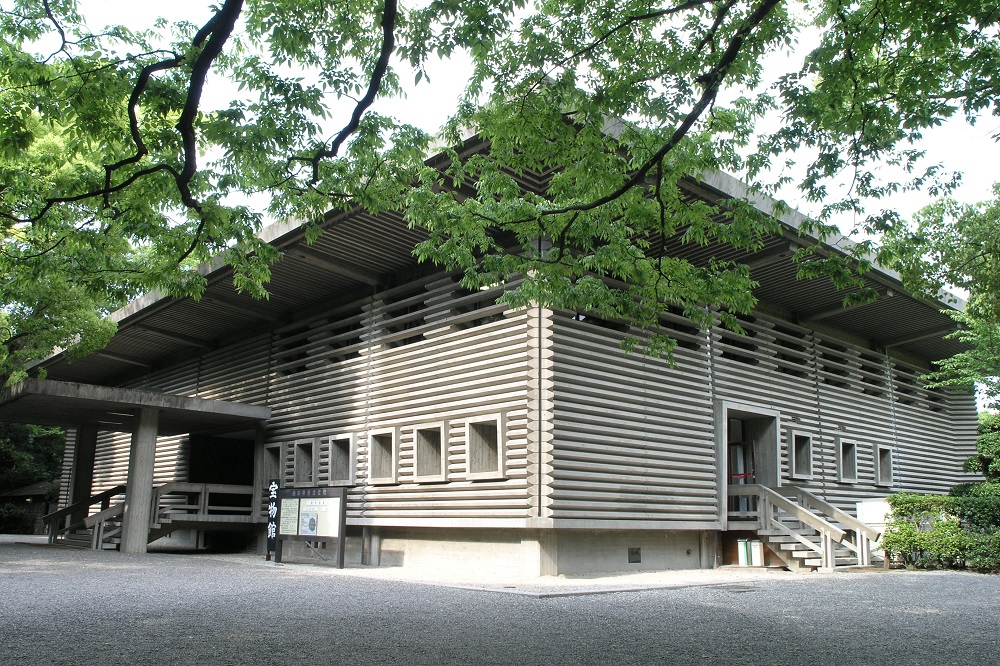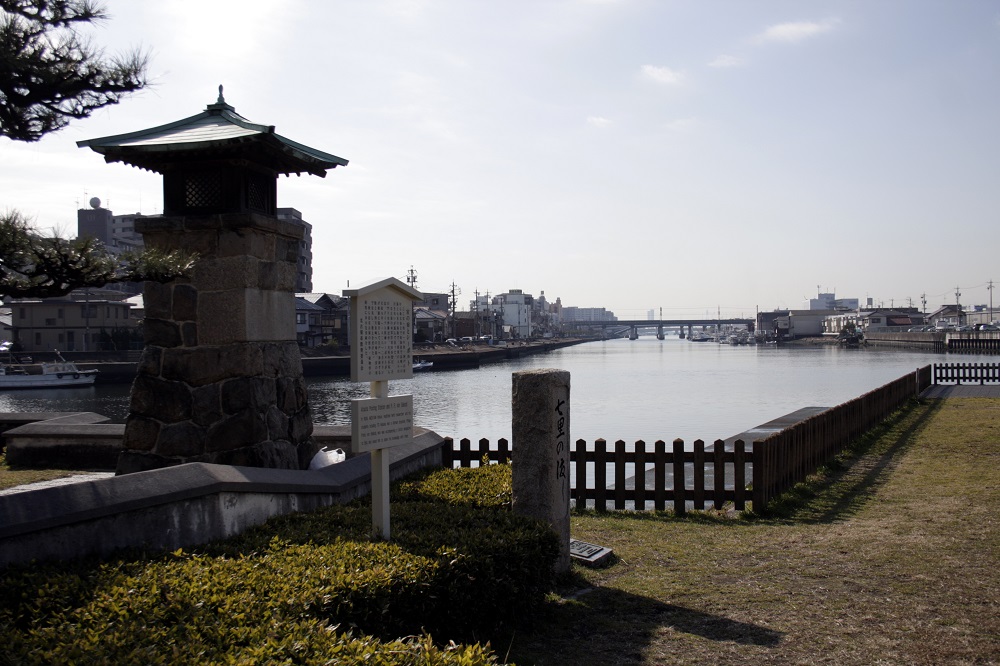Atsuta Jingu [Shrine] / 熱田神宮 (Aichi)
About Atuta Jingu [Shrine]
Founded in the year 113 (the 43rd year of the domination of Emperor Keiko), Atsuta Jingu [Shrine] has a history dating back over 1,900 years. Known as the second most sacred shrine in Japan after Ise Jingu [Shrine] in Mie Prefecture, Atsuta Jingu [Shrine] has long been revered by the Japanese nationals and is affectionately called "Atsuta-san" [Dear Atsuta]. The symbolization of the Imperial Throne, the "Sanshu no Jingi" [Japan's Three Sacred Treasures] is passed down through the Imperial Family for generations, and the "Kusanagi-no-tsurugi" [Sacred Sword of Kusanagi] is kept at Atsuta-san [Dear Atsuta], dedicated to "Atsuta-no-Ookami" (said to be the "Amaterasu Oomikami").

©熱田神宮
In addition to "Hongu" [Main Shrine], there are one "Bekku" [Annex Shrine], twelve "Sessha" [Regent Shrines], and thirty-one "Massha" [Affiliated Shrines] enshrined within and out of the precincts of the Atsuta Jingu [Shrine]. The temple grounds, covering an area of approximately 190,000 square meters, are surrounded by trees that are over 1,000 years old. The tranquility makes forget the fact of being in the city and gives a sense of purification of body and soul while walking through the precinct.
The "Hongu" [Main Shrine] is built in the "Shinmei-zukuri style", the same as that of Ise Jingu, and its grandeur attracts many visitors. In addition, the Ichinomisaki Jinja [Shrine], located behind the "Hongu" [Main Shrine], enshrines the deity "Aramitama" [divine spirit] of Amaterasu-Oomikami.
Every year around New Year's Day, people who are practicing the conventional New Year come by and give the precincts the liveliest atmosphere.

©熱田神宮
On Eiroku 3 (1560), when Oda Nobunaga departed for the front for Okehazama, he prayed for victory at Atsuta Jingu [Shrine] and lead to great victory, he dedicated this roofed mud "Nobunaga-Bei" [wall] to express gratitude.
This wall is made by kneading earth and quicklime with oil and laying large quantities of tiles over 100 meters long over each other. It is said to be one of the three most important earthen walls in Japan, alongside the "Taiko-Bei" [Wall] at Sanjusangendo Hall in Kyoto Prefecture and the "Oneri-Bei" [Wall] at Nishinomiya Shrine in Hyogo Prefecture.
"Nobunaga-Bei" [Wall], attracting the attention of the Japanese media as a place associated with Oda Nobunaga, and is one of the spots not to be missed when visiting Atsuta Jingu [Shrine].

©熱田神宮
About 6,000 precious resources donated from the Imperial Family, Shogun, Feudal Lord, and philanthropists in general are collected at the "Bunka-Den" [Treasure Exhibition Hall].
The 177 of the collections are designated as National Treasures, Important Cultural Assets and Aichi Prefectural Cultural Assets, which are sacred treasures, Japanese swords, Japanese mirrors, Bugaku [dance and music] masks, paleography and appliances.
Since "Kusanagi no tsurugi" [Sacred Sword of Kusanagi] is enshrined at the Atsuta Jingu [Shrine], numerous Japanese swords are exhibited at the “Kusanagi-kan” and it is said to be the treasure trove of Japanese swords.
The displays of these collections are open for public viewing in sequence.
"Bunka-Den" is the annex facility of the Treasure Exhibition Hall of which the Jingu opens to the followers to enforce the cultural projects when the facility does not hold festivals or events.
Getting there and around
by Train
Take the Nagoya Railroad Nagoya Main Line and disembark at JINGŪ-MAE Station, then walk for 3 minutes.
by City Bus
Take the Nagoya City Bus and disembark at Jingu Higashimon Bus Stop.
Recommendations
Kamichikama Shrine / 上知我麻神社
One of the regent shrines of Atsuta Jingu [Shrine] is the "Kamichikama Shrine" where persons with deep believe in religion visits to pray passionately for prosperous business, family safety, and dedicates an “ema” [Shinto plaque] for prayers for academic achievements as Bodhisattva of Wisdom.
Two of the "Shichifukujin" [Seven Deities of Good Fortune], "Daikoku-sama" [The Deity of Fortune and Happiness] and "Ebisu-sama" [The Deity of Prosperous Business] are enshrined on both sides of the shrine, leading numerous persons to visit the shrine to pray for prosperous business, family safety, and academic achievements.
Annually on January 5, the “Hatsu-Ebisu" Festival is held to pray for prosperous business, family safety, and rich fishing industry. This festival attracts numerous persons and is now one of the famous traditions of the New Year.

©熱田神宮
Ookusu / 大楠
On the way to the Hongu [Main Shrine], is a large camphor tree with a "Shimenawa" [sacred rope] tied around. This "Ookusu" [camphor tree] is said to be around 1,000 years old and is one of the largest camphor trees within the precinct of the Atsuta Jingu [Shrine].
It is told that this "Ookusu" [camphor tree] was planted by hand by Kobo Daishi [Kukai], the founder of the Shingon school of Buddhism, and the graceful appearance hints at the long history shared with Atsuta Jingu [Shrine].

©熱田神宮
Atsuta Matsuri [Festival / Rei-sai] / 熱田まつり
On June 5, Atsuta Matsuri [Festival / Rei-sai], the most meaningful and solemn festival of Atsuta Jingu [Shrine] is held. An Imperial envoy will be sent by the emperor and prayers for the prosperity of the Imperial Family and peace for the country will be held annually.
Following the festival, starting with “Kento-makiwara” [lanterns and straw posts] and fireworks, numerous oblation events are held, and this festival is well known to the citizens of Nagoya as the signal for the start of the summer.

©熱田神宮
Unique Local Experiences
Before the Edo Era, the sea extended to the south of where Atsuta Jingu [Shrine] is now located, was used to be called "Atsuta Minato" [Atsuta Port]. The embarkation point at "Miya-juku" (the town around the Atsuta Jingu [Shrine]) connected the most important post towns on the "Tokaido" Kyoto and Edo [Tokyo], and over the sea to Kuwana-juku in Kuwana City of Mie Prefecture. The land expanded during the Edo era, retrieving the growth of new rice fields, giving the current geography. The "Miya-no-Watashi" Park presents what it was like back then.

©(公財)名古屋観光コンベンションビューロー
Travel Recommendations
Take the Nagoya Railroad [Meitetsu] Line from Nagoya Station or Kanayama Station to make a visit to Atsuta Jingu [Shrine] simple.
Since there are only a few accommodation facilities around the Atsuta Jingu [Shrine], we recommend staying around Nagoya Station or Kanayama Station. These stations are also very convenient for visiting other sites in Nagoya.
Accommodations
ANA CROWNE PLAZA HOTEL GRAND COURT NAGOYA / ANAクラウンプラザホテルグランコート名古屋 (Aichi)
1-1-1 Kanayama-cho, Naka-ku, Nagoya, Aichi
ANA CROWNE PLAZA HOTEL GRAND COURT NAGOYA is located just a short stroll away from Kanayama Station, the second hub station of Aichi Prefecture following Nagoya Station. The hotel is conveniently located just 5 minutes from Nagoya Station by train an....

